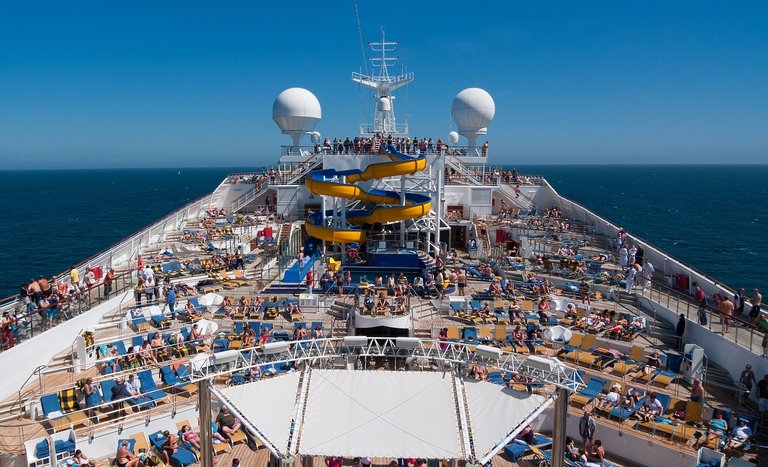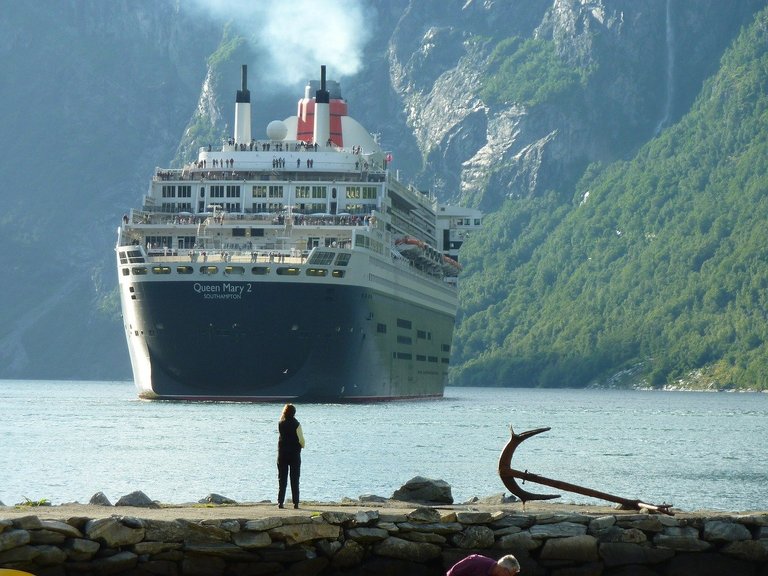All You Need to Know About Greywater Discharge From Ships - Ocean Conservation News

"Spoiler alert: it is some really gross stuff"
What's greywater?
"The International Maritime Organization defines it as “the drainage from dishwater, shower, laundry, bath and washbasin drains.” At first glance, this may not seem as bad as drainage from toilets (i.e. sewage), but surprise, it is! While people understand the dangers (and let’s face it, the general grossness) of untreated sewage, few realize that untreated greywater can be just as nasty."
Sarah Bobbe of Ocean Conservancy explains what greywater is, compares greywater to sewages, and how passenger ships (like cruise lines) are the biggest contributer to greywater being dumped into marine ecosystems.
- "The EPA found sewage discharge rates on passenger vessels to be 8.4 gallons per day per person, while greywater discharges total anywhere from 45 gallons per day per person to 65 gallons per day per person."

Dumping raw greywater may be a neccessity still for the majority of sailors but cruise lines have the ability and funding to ehance their greywater waste systems, and should.
Read the article from Ocean Conservancy :
https://oceanconservancy.org/blog/2019/05/27/need-know-graywater-discharge-ships/
Goals of Port Sundries
- Educate the public about marine conservation and how marine conservation is important to all other ecosystems on Earth and all of humanity.
- Provide basic sailing resources and teach how the hobby and lifestyle can adapt to assist marine conservation.
- Share ecofriendly and sustainable methods of coastal and island travel and tourism.
- Share the joy of life at sea, love of ocean adventure, a fondness for culture, and the enjoyment of nautical history.
If you would like to help us with these goals, please follow and consider upvoting this and our other posts. We are always thankful for those you upvote, follow, or repost.
Help defend the oceans. Support sustainable fishing and aquaculture/agriculture practices. Don't pollute your local waterways. Donate to your local marine conservation charity.
🐬🐬🐬Donate to the Dolphin Project 🐬🐬🐬https://www.dolphinproject.com/donate/
Dolphin Project is a non-profit charitable organization, dedicated to the welfare and protection of dolphins worldwide. Founded by Richard (Ric) O’Barry on Earth Day, April 22, 1970, the organization aims to educate the public about captivity and, where feasible, retire and/or release captive dolphins.
The mission of Dolphin Project is to end dolphin exploitation and slaughter, as dolphins are routinely captured, harassed, slaughtered and sold into captivity around the world – all in the name of profit. Dolphin Project works not only to halt these slaughters, but also to rehabilitate captive dolphins for retirement and/or release, investigate and advocate for economic alternatives to dolphin slaughter, and to put a permanent end to dolphin captivity.
Port Sundries is not affiliated with Dolphin Project but supports their goal 100%.
Follow us @portsundries for more Marine Conservation, Sea Life, and Sailing News.
Image courtesy of Pixabay
I have lived in a number of countries where all wastewater other than sewage simply ran down the communal drains into a nearby river. It is pretty nasty.
I hope the boats use some sort of filtration to limit at least some of this. To be honest, the sewage might actually be better for the ocean than the detergents and what not because as nasty as it sounds, fish will eat that. well, not paper but i think you know what i mean.
Good stats, I have never been on a cruise so I never bothered to look up any of this information. Pretty frightening stuff.
The only place I know of that as regulations where cruise ships must process their waste water before dumping its is Alaska, but the ships still sometimes illegally dump and there is not enough enforcement. There are various wastewater regulations all over, like in the United States many ports will not allow een small vessels to dump near the coast, they must go out a few miles first before dumping directly into the water. There of course are many marinas that have sewage and greywater dumping access, much like an RV.
I think its Italy that just banned large cruise ships from entering certain historical waters. I will have to double check and post about it.
Hi @portsundries,
Great to see you posting to the TravelFeed community! We launched the #travelfeed curated tag more than 3 years ago and have been supporting the best travel blogs on Hive ever since. But did you know that TravelFeed has evolved? Based on the feedback of thousands of Hive travel bloggers we created TravelFeed.io.
TravelFeed.io brings together all the benefits of Hive decentralized blogging with features that you as a travel blogger will love: Photo galleries, Instagram embeds, custom maps, post scheduling and more. And if you want, you can even use our easy site builder to set up your own travel blog on your own domain which can be a great way to generate a passive income from your blog!
Unfortunately, focussing on developing the best platform for travelers means that we no longer curate the #travelfeed tag and the TravelFeed Hive community. But, you can log in with your Hive account on TravelFeed.io to publish your next travel post, and it will be posted to Hive automatically! Every day, we select the best posts and reward them with an upvote and added visibility.
We would love to see you on TravelFeed.io soon :)
Good to know. I will try to remember to post my travel posts from TravelFeed.io and my others here. I like to use multiple routes.